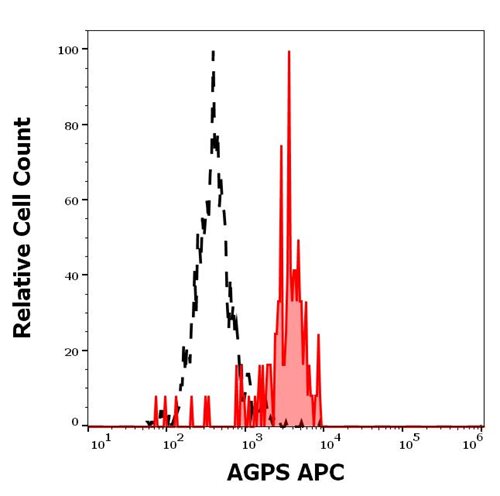Monoclonal Antibody to Glyceraldehyde 3-Phosphate Dehydrogenase (Clone: 1D4)

Figure-1: Immunofluorescent analysis =of HeLa cells stained with mouse mAb to GAPDH,(34-1047), dilution 1:100 in green. Blue is Hoechst staining of nuclear DNA. The (34-1047) antibody produces strong cytoplasmic staining of healthy cells.
Roll over image to zoom in
Shipping Info:
For estimated delivery dates, please contact us at [email protected]
| Format : | Purified |
| Amount : | 500 µl |
| Isotype : | Mouse, IgM |
| Content : | Antibody is supplied as an aliquot of 1 mg/ml of affinity purified antibody. |
| Storage condition : | Store the antibody at 4°C; stable for 6 months. For long-term storage; store at -20°C. Avoid repeated freeze and thaw cycles. |
WB: 1:1,000 IF/IHC: 1:100.
For Research Use Only. Not for use in diagnostic/therapeutics procedures.
| Subcellular location: | Cytoplasm, Nucleus, Cytoplasm, Membrane, Cytoplasm |
| Post transnational modification: | Oxidative stress can promote the formation of high molecular weight disulfide-linked GAPDH aggregates, through a process called nucleocytoplasmic coagulation. Such aggregates can be observed in vivo in the affected tissues of patients with Alzheimer disease or alcoholic liver cirrhosis, or in cell cultures during necrosis. Oxidation at Met-46 may play a pivotal role in the formation of these insoluble structures. This modification has been detected in vitro following treatment with free radical donor (+/-)-(E)-4-ethyl-2-[(E)-hydroxyimino]-5-nitro-3-hexenamide. It has been proposed to destabilize nearby residues, increasing the likelihood of secondary oxidative damages, including oxidation of Tyr-45 and Met-105. This cascade of oxidations may augment GAPDH misfolding, leading to intermolecular disulfide cross-linking and aggregation. |
| BioGrid: | 108868. 233 interactions. |
|
There are currently no product reviews
|

















.png)











